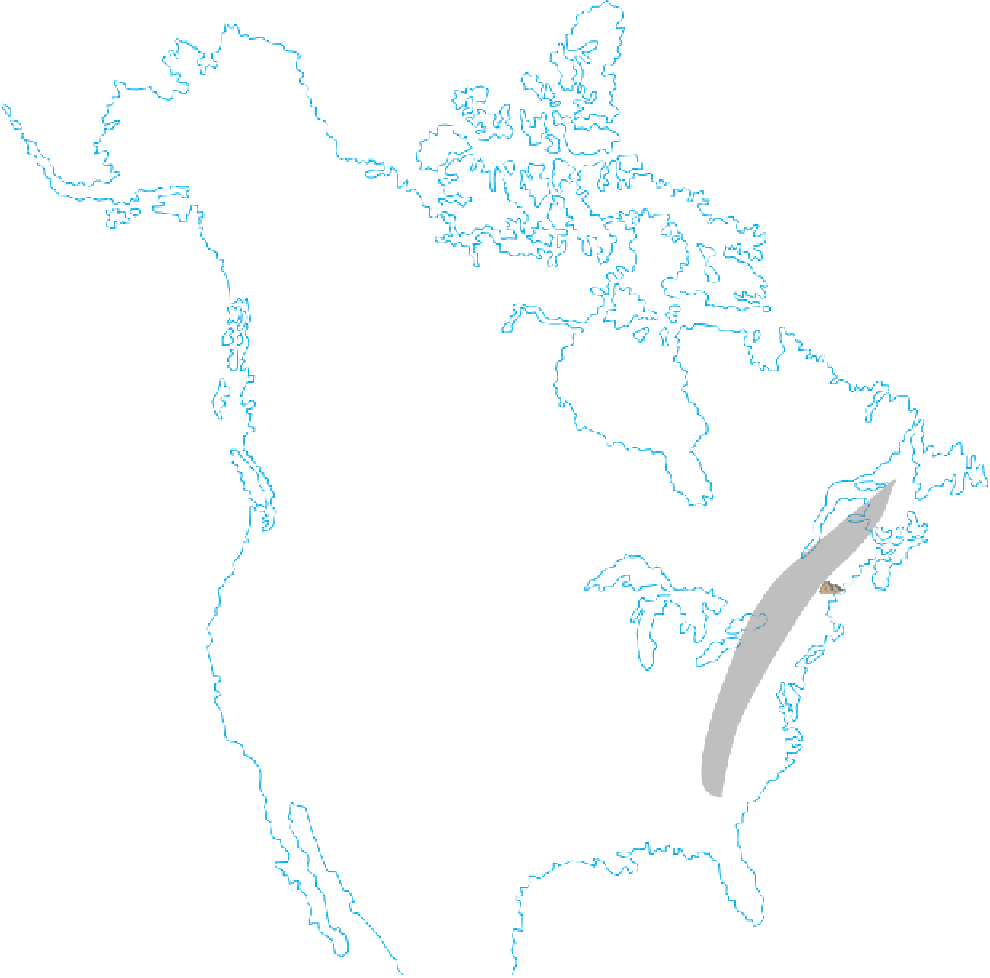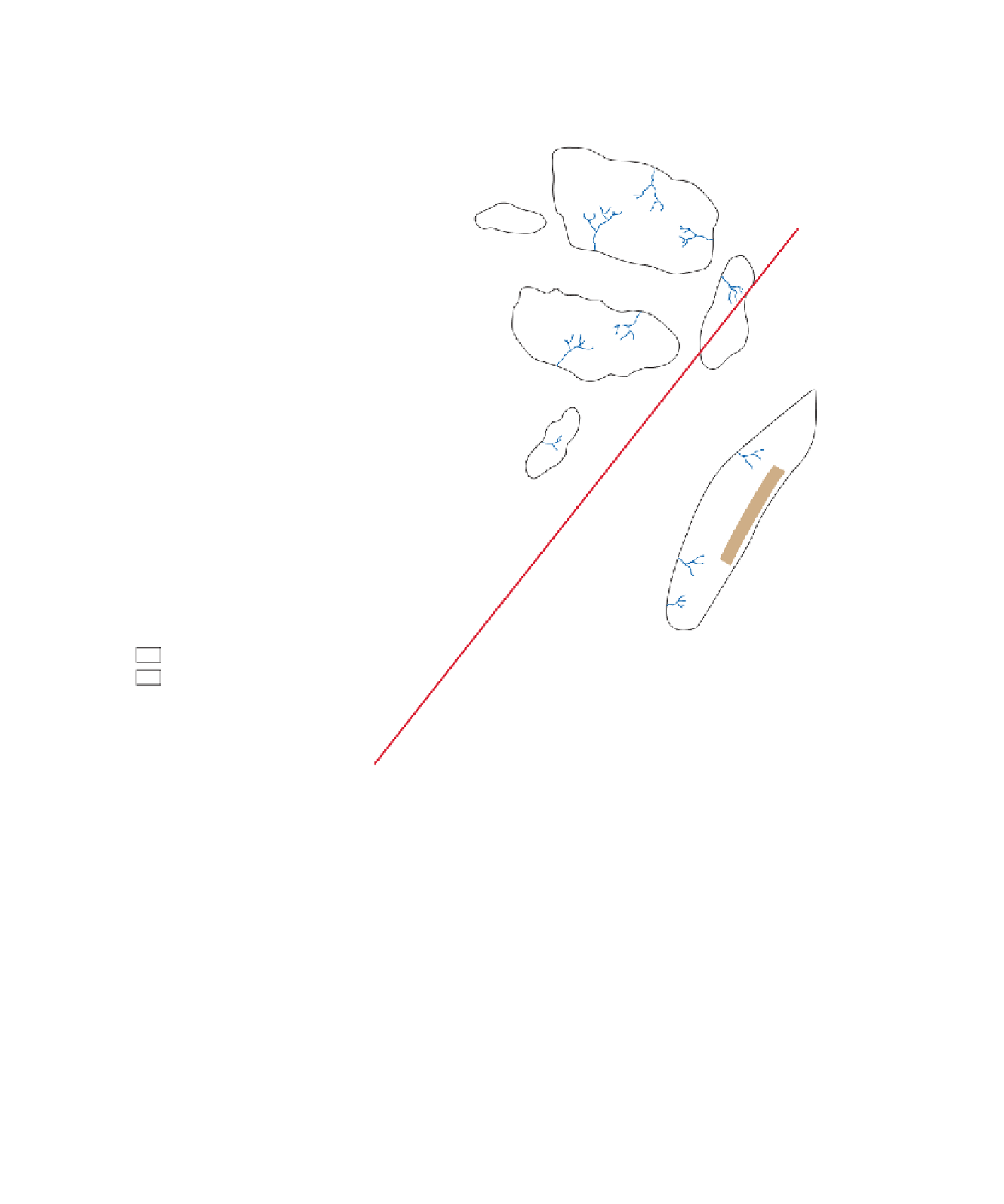Geology Reference
In-Depth Information
Craton
Carbonate bottom
Land
Mountains
Epeiric sea
Deep ocean
◗
Figure 20.8
Ordovician Paleogeography of North America Note that the position of
the equator has shifted since the Cambrian, indicating that North America was rotating
counterclockwise during this time.
carbonate seafl oors and platforms beyond the infl uence of
detrital sediments.
The Middle Silurian rocks (Tippecanoe Sequence)
of the present-day Great Lakes region are world famous
for their reef and evaporite deposits (
of the basin (Figure 20.11a). Besides the pinnacle reefs, bed-
ded carbonates and thick sequences of salt and anhydrite are
also found in the Michigan Basin (Figure 20.11a, b, c).
As the Tippecanoe Sea gradually regressed from the
craton during the Late Silurian, precipitation of evaporite
minerals occurred in the Appalachian, Ohio, and Michigan
Basins (Figure 20.10). In the Michigan Basin alone, approxi-
mately 1500 m of sediments were deposited, nearly half of
which are halite and anhydrite. How did such thick sequences
of evaporites accumulate? One possibility is that when sea
level dropped, the tops of the barrier reefs were as high as or
above sea level, thus preventing the infl ux of new seawater
into the basin. Evaporation of the basinal seawater would
result in the formation of brine, and as the brine became
◗
Figure 20.10). The
most famous structure in the region, the Michigan Basin,
is a broad, circular basin surrounded by large barrier reefs.
No doubt these reefs contributed to increasingly restricted
circulation and the precipitation of Upper Silurian evapo-
rites within the basin (
Figure 20.11).
Within the rapidly subsiding interior of the basin, other
types of reefs are found.
Pinnacle reefs
are tall, spindly structures
up to 100 m high. They refl ect the rapid upward growth needed
to maintain themselves near sea level during subsidence
◗


















Search WWH ::

Custom Search